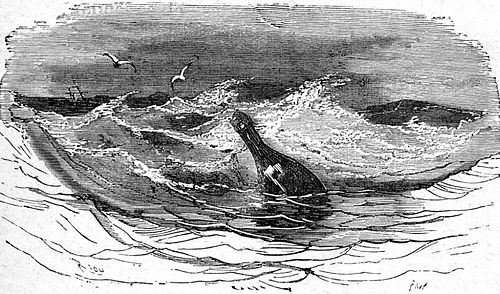JUNE 16, 2025 – Today on I95 we crossed over the Connecticut River about two and a half miles north of where it empties into Long Island Sound, technically part of the Atlantic Ocean. As we hurtled along, I stole a glance at the broad river mouth and sealed the fleeting image in my memory by pretending my eyes were camera lenses.
With the passing of time and distance along our way to Cape Cod, I contemplated the river’s beauty and the river’s history, much of the latter consisting of an assault on its beauty. Soon after the Dutch landed here in the early 17th century, the Connecticut River developed into a commercial corridor and eventually a major trade and manufacturing center for the young country. Inevitably, given the reigning forces of American capitalism, fueled by exploitation of resources, the river—as was the case with so many of the nation’s waterways, became polluted byways of waste. Today, in testament to the efficacy of government regulation, the Connecticut River is far cleaner than it was in the days of direct discharge of untreated waste straight into the water.
I’m not sure that back in the day my grandparents or mother and uncle (our dad never spent a single vacation day in the state of Connecticut) were at much concerned about pollution along the Connecticut River. During summer visits at our grandparents’ home in New Jersey, on weekends we’d be carried off to “the country,” as our grandmother referred to their getaway place overlooking Upper Hamburg Cove, an anomalous offshoot of the Connecticut River about five miles up from where I95 crosses, just above Old Lyme and Old Saybrook.
During those weekends “in the country,” Grandpa would cart us from their place high on a bluff overlooking the cove to Elys Ferry Landing, just a couple of miles downstream across from Essex. The ferry was long gone, but at the landing was a small public beach, which turned out to be our private place. Grandpa would join us in the water as we kids shrieked with delight as the “wave machines”— oversized motor yachts—passed by, generating an almost continuous surf breaking onto the beach. Usually laser focused on “bidness,” Grandpa got a charge out of showing us how he could float on his back and stick his toes out of the water. His antics made me laugh, and I was heartened to know that he was in fact capable of leaving business behind for a couple of hours to be with us, splashing around in the Connecticut River.
He never worried about river pollution, and as a kid, neither did I. The fact of the matter in those times was that the country elsewhere was also plenty polluted. Thanks to a cultural shift in awareness and attitudes and the consequent passage of remedial legislation, state and federal, and corresponding regulations, much of the pollution was reduced. Unfortunately, the current regime seems determined to give polluters an open shot at befouling our air, water and earth, presumably for the short term monetary gain of the perpetrators.
In their contempt for clean air, water and soil, however, perhaps the Republicans will lift the ban on direct littering into the nation’s waterways. If so, I might act against my better judgment and sensibility. Perhaps I’ll satisfy a long-standing desire to repeat with greater success, the experiment that my sisters and I conducted when we were quite young: putting a note in a bottle, then dropping the bottle into the river to see if anyone retrieves it, and if so, who, when and where.
I forget just when we polluted the upper Mississippi River in this regard, but I think it was a good 60 years ago, at least. We used an empty ketchup bottle, and for the note we imparted very basic information—our names and address and that we’d appreciate hearing from whoever might find the bottle and read the message: “Would the person who finds this bottle please state your name and when and where you found the bottle.” We included with our simple instructions a pre-stamped and self-addressed postcard.
Many weeks later, the postcard arrived in the mail. Sure enough, someone had fished the bottle out of the Mighty Miss. The finder happened to be a worker at one of the lock and dam sites south of the Twin Cities. I’d been hoping the bottle would’ve made it to the Gulf of Mexico—at least—but after giving the matter proper thought as I watched the river go lazily by our street in Anoka, Minnesota, I realized how lucky we were that anyone would find the bottle and bother to return our postcard.
We grew up in a household in which littering was considered as big a crime as say, shoplifting. No decent person would contemplate ever doing either. And littering included dropping inadvertently the smallest of candy wrappers—let alone a whole glass bottle with paper inside. But somehow, we never considered dropping a bottle with a note inside into the river as littering—just as our elders probably didn’t give a second thought to pipes discharging large volumes of untreated waste into the river.
In anticipation of our trip to Connecticut this month, I’d contemplated repeating that old experiment, this time with our nine-year-old granddaughter. But I caught myself in time. I realized, of course, that however quaint and sentimental the idea might seem, in the cool light of day, a glass bottle with paper inside plopped into the river from say, the Chester-Hadlyme Ferry, would be littering, polluting. Moreover, as a boatowner, I knew the damage that a glass bottle (or five or 10) could create for a small watercraft.
I swiftly rejected the idea, but before I sank it entirely, I thought of a satisfactory and non-littering variation. (Cont.)
Subscribe to this blog and receive notifications of new posts by email.
© 2025 by Eric Nilsson
